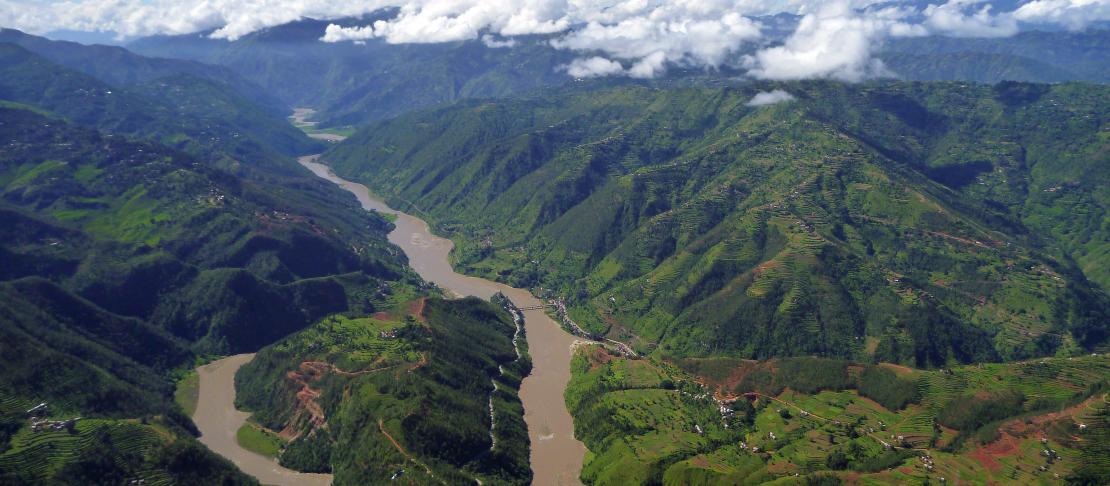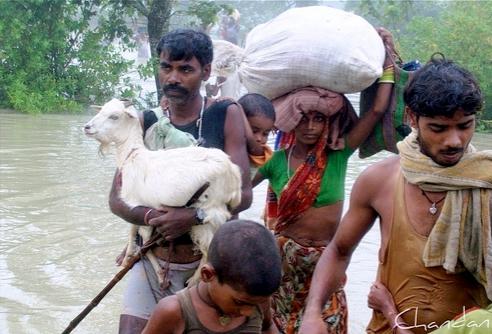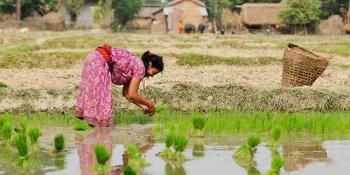New study shows how climate change will impact water availability in Koshi river basin

The impacts will be felt at smaller scales at the seasonal and sub-basin level. But efficient water use, through better storage and distribution, could be the real answer to Nepal’s chronic water problems.
Originating in China, flowing through Nepal, before finally joining the Ganga in Eastern India, the transboundary Koshi River is a lifeline for millions along its course.
With references to it going back to ancient legend and scripture, the river is feared for the havoc it wrecks during floods but equally revered for the abundance it brings to lives.
As the largest river basin in Nepal, it is a valuable water resource for the country.
A new study, the Projected Impact of Climate Change on Water Availability and Development in the Koshi Basin, Nepal, by researchers from the International Water Management Institute (IWMI) in Nepal, assesses the likely impact of climate change on water resources development in the Koshi River basin and generates projections for the 2030s and 2050s.
The Intergovernmental Panel on Climate Change (IPCC) in its report early this year highlighted that the South Asia region is particularly vulnerable to climate change. This is likely to manifest through increased precipitation and more frequent extreme weather events, such as floods, particularly in vulnerable areas like coasts and river basins. Using simulation models to understand how climate change will affect our natural resource base is one way to set the stage for better planning and adaptation.
There is no dearth of available water in Nepal. Nearly 225 billion cubic meters of water is available annually, yet only a paltry 15 billion cubic meters (less than seven percent) is actually used. Being an agrarian economy, most of this water goes into agriculture activity but even so only 24 percent of the arable land is irrigated. Crop productivity in Nepal remains among the lowest in South Asia.
So what are the implications of climate change on water availability in the Koshi River Basin and what are some recommendations based on the projections from this study?
Impacts vary at different scales
Using downscaled climate data from the CGIAR Research Program on Climate Change, Agriculture and Food Security, researchers ran the Soil and Water Assessment Tool (SWAT) model for the baseline (1971–2000), 2030s (average for 2016–2045), and 2050s (average for 2036–2065) to simulate water balances and runoff (basically the volume of water getting into and out of the system). The impact of climate change was estimated by comparing the baseline with the projected data.
The climate change analysis shows that the impacts are very scale dependent. This study compared projected changes at both temporal and spatial scales in water balance components (precipitation, actual evapotranspiration, and water yields) as well as flow volumes.
The findings indicate that the impacts of climate change are likely to be higher at smaller scales like seasonal and sub-basin levels than at larger, annual and full-basin, scales. At the sub-basin scale, under projections used in this study, precipitation is likely to increase in the upper transmountain region in the 2030s and in most of the basin in the 2050s, and it is projected to decrease in the lower sub-basins in the 2030s.
The study shows that there is large temporal and spatial variability in precipitation, actual evapotranspiration (which accounts for both evaporation and plant transpiration from the earth's land and water surface to the atmosphere), and water yield in the basin under different climate scenarios.
In the upper parts of basin, runoff is greater than evapotranspiration, whereas in the lower parts, evapotranspiration is greater than runoff.

Main conclusions and recommendations from the study
Climate change will not reduce the bulk water availability in the basin , that is, at the annual or basin scale.
Climate change will increase variability in the system so future water resource management needs to focus on managing variability.
Store and transfer water seasonally, that is, from the monsoon into the dry season as well as spatially - from water abundant to deficit areas
Focus on storage and distribution
From this study, water yield in the basin, whether in the present or future, does not appear to be a pressing concern. Given that water use from the basin is merely 14 percent of its annual water availability, the study can reorient research focus from analysing changes in water flow under different climate scenarios to also looking at how storage and distribution facilities can be strengthened to use water efficiently.
The creation of storage infrastructure is not a silver bullet solution by itself, but requires strong local institutions and capacity building and training of those operating them.
The creation of storage infrastructure does not mean just investing in large reservoirs but it could be a combination of large and small scale storages which include both small and large reservoirs, community ponds as well as management of soil moisture and groundwater. Further assessment also has to be done on the placement and use of the storage infrastructure from a physical, social as well as governance perspective,” says Luna Bharati, Principal Investigator, IWMI Nepal.
Researchers from IWMI are at the moment in the process of assessing the various aspects of storage development in the Koshi basin.
Policymakers are increasingly aware that climate change adaptation and economic growth hinge on the efficient management of water resources- its availability, but more significantly how it is harnessed and used. Unless sustainable adaptation measures are in place- and these will include investments in physical and social capital- climate change is expected to exacerbate existing challenges to lives and livelihoods.
Further and forthcoming reading:
- L. Bharati, P. Gurung, L. Maharjan, Utsav Bhattarai and P. Jayakody. Forthcoming. Current and Future Variability in the Hydrological Regime of the Koshi Basin, Nepal. Forthcoming in Hydrological Sciences Journal
Dharini Parthasarathy is a Communications Specilaist at CCAFS South Asia.


